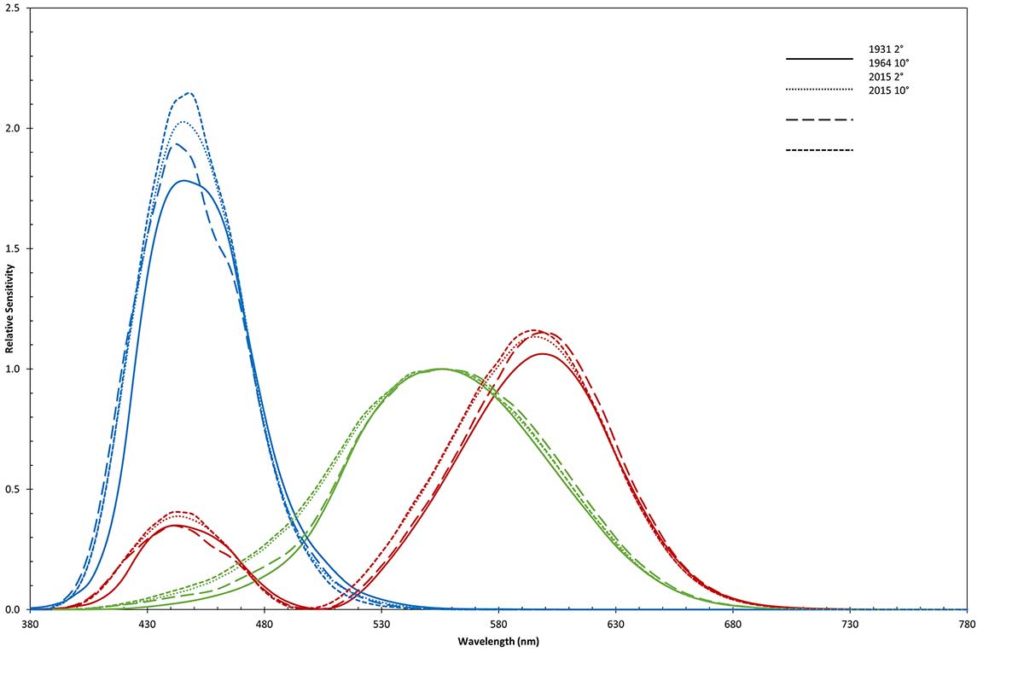"Imagine you adjust two separate color-tunable LED fixtures to visually match in color appearance, but when you pull out your expensive, accurate spectroradiometer and measure the chromaticity of each, there is a significant difference that should be noticeable. How can that be?
Alternatively, you tune two LED fixtures to be a perfect chromaticity match, according to that meter. Then, you show them to everyone in your office. Chaos ensues when the team realizes they are not a visual match for most of the group despite what the meter says."

www.ies.org/lda-magazine/featured-content/color-the-limits-of-a-standard-observer/
